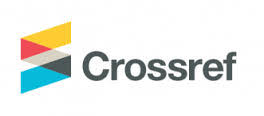The Effect of Using the Semiotic Strategy on Developing Verbal Mathematical Problem-Solving Skills among Eighth-Grade Female Students in Jordan
DOI:
https://doi.org/10.59759/educational.v3i4.827Keywords:
Semiotic Strategy, Mathematical Problem-Solving skills, Eighth Grade Female Students.Abstract
The study aimed to investigate the effect of using the semiotic strategy in developing some verbal mathematical problem-solving skills among eighth-grade female students in Jordan. The study used the quasi-experimental approach, and the population of the study consisted of (60) female eighth-grade students in mathematics in one of the schools affiliated with the Directorate of Education for the Northwestern Badia in Mafraq Governorate, who were randomly distributed into two groups, one of which was experimental, taught by using the semiotic strategy, while the other was the control group, taught in the usual way described in the teacher’s guide, with (30) students in each group. In order to achieve the objectives of the study; the researcher in the study used the study tool in the form of a test that measures verbal mathematical problem-solving skills. After verifying its validity and reliability, the results of the study indicated that there was a statistically significant difference at the level of significance (α= 0.05) between the average scores of the experimental group and those for the control group in the test of verbal mathematical problem solving skills and in favor of the experimental group, who were taught with the semiotic strategy. Based on its results, the study recommended many recommendations and proposals, the most important of which is the need to pay attention to training mathematics teachers to use the semiotic strategy in teaching, as it is considered one of the modern teaching strategies, since it has a positive impact on developing verbal mathematical problem-solving skills, and designing the steps for solving the verbal mathematical problem in the mathematics curriculum for the eighth grade according to the steps of the semiotic strategy.
Downloads
References
Abu Sakina, Nadia The effectiveness of semiotics as a proposed strategy in developing linguistic creativity by reading the symbolic text (half a word for Ahmed Ragab) among students of the Faculty of Education. Dirasat Journal, (2009). (143), 60-121
Atkin, E.Peirce’s Theory of signs the Stand ford Encyclopedia of philosophy. New York: Teachers College Columbia University, 2013.
Alwan, A. “Verbal skill of solving the verbal problem of primary students”, school Misan, Journal of Academic - Studies, 2017,16(32), 141- 162.
Dives, Robeir: Educational Statistics, “European Journal of Educational and Development Psychology”, 2014, 4(2).
Irem, Arican. Semiotic Approach in English classes and it's effect On student's achievement and attitude in speaking, theses, hacettepe university, Turkia, 2020.
National Council of Teachers of Mathematics ,Principles standards for school mathematics. Reston, VA: NCTM, 2000.
Zakharov, A. “The Trends of Evolution of TRIZ”. The TRIZ Journal, 2008. from the site: https://triz-journal.com/explore-the-future-of-triz-with-the-trijnds-of- evolution/


